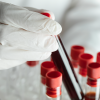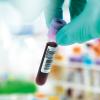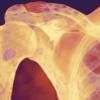Specialist Biomedical Scientist Anas Nasir on how and why he started posting blood films on social media and what happened next.

You could describe it as a rite of passage for haematology. There comes a time in the training when you are sat at a microscope with either a book by the living legend Barbara Bain, or with someone who has greater experience in reporting blood films. It was the same for me. I had started my IBMS specialist portfolio and as part of my general haematology rotation the reporting of films was something I needed to do. One of the senior biomedical scientists sat with me and we began. Right from the basics. While I saw animals and dinosaur colonies, my senior highlighted the different red cell morphologies. While I saw extraterrestrial beings, she showed me how to differentiate the various white cells and their immature forms. While I found facial expressions in neutrophils, she taught me how to link what was on the peripheral blood film to the patient’s clinical condition and the full blood count results. And then I was signed off.
Posting to social media
The one thing that many agree on when it comes to reporting peripheral blood films is that, “it never looks like it does in the textbook”. On the rare occasions when they do, it is somewhat easier to identify the various cells being observed. However, if a patient is on treatment, or there is a combination of pathologies, then it’s a whole different dilemma. I realised quite quickly that the latter was more often the case. I especially struggled distinguishing between reactive lymphocytes, monocytes and blasts (immature progenitor cells). It was on one such occasion I sat staring at the cell, pontificating for far too long. Was it an atypical lymphocyte or a monocyte? The more I thought, the more confused I became and so decided to take a picture of the cell and post it to my LinkedIn and Twitter pages, captioned “HELP, what is it?” Though no one replied before I was able to ask one of my colleagues the same question, a few hours later a handful of people across the globe had commented with their suggestions. Some were biomedical scientists and medical laboratory scientists, others haematopathologists. So it began, the weekly posts of an interesting picture from a blood film I had seen and occasionally those that I struggled with!
“The cases vary in complexity and highlight the vast range of pathologies that can be seen”
Generating discussion
Each week, I post a new blood film as part of Morphology Monday on LinkedIn, Twitter and MedShr using the #MorphologyMonday hashtag. The cases vary in complexity and highlight the vast range of pathologies that can be seen just by looking at a drop of blood. As biomedical scientists we use blood films to determine the accuracy of full blood count results generated by the analysers, and so I have included cases where the diagnosis wasn’t the most important thing, but rather identifying the issues that may arise before or during analysis, hence affecting the results. The cases are viewed by individuals all over the world, from different professions and at different points in their career. There are students, biomedical scientists, doctors and even nurses who sometimes participate in the discussions generated. Working at a big organisation such as Viapath at Guy’s and St. Thomas’ NHS Foundation Trust, in such a culturally diverse city, home
to people from all over the world, I have the opportunity to see things that people unintentionally bring from their travels. I was able to share images of the first locally acquired case of babesiosis in the UK – a parasitic infection that mainly occurs in parts of the Northeast and upper Midwest US, which many, including myself, had never seen before. I have had biomedical scientists and doctors across the country and further afield share images with me to use as part of Morphology Monday.
Sharing and developing
One of the questions I repeatedly get asked is: “Where do I start learning morphology?” So I decided to take this one step forward and created a YouTube channel “Oh Blast Morphology” to give more detailed explanations to the Morphology Monday cases and also aim to create a set of videos for beginners, helping to overcome some of the initial hurdles that are faced.
I started Morphology Monday as a way of developing myself and also to share some of the interesting things I had learnt with others. As such, any of the images I post are available to those who would like to use them for training and development purposes. Also if you have an interesting case that you’d like to share, feel free to do so using the #MorphologyMonday hashtag or get in touch and I can do so for you.
Anas Nasir is a Specialist Biomedical Scientist who works in haematology and blood transfusion at Viapath, Guy’s and St Thomas’ NHS Foundation Trust.
To view Anas’ YouTube channel visit youtube.com/c/OhBlastMorphology. You can see his Monday Morphology posts at twitter.com/underthe_scope or by searching #MorphologyMonday.
Image credit | iStock




